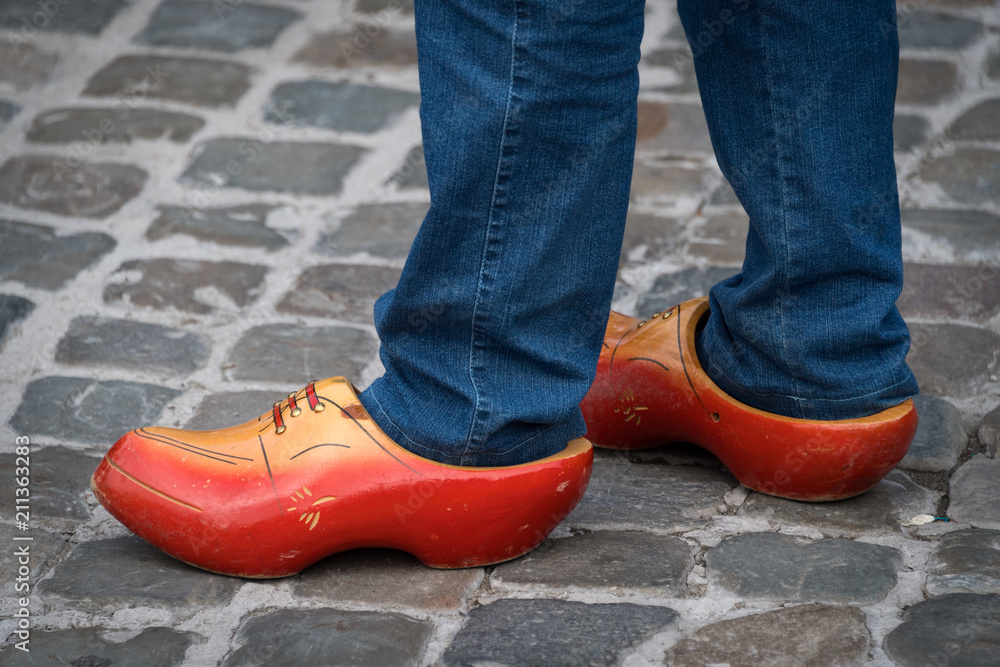When one thinks of the Netherlands, several images come to mind—picturesque windmills, vibrant tulip fields, and, of course, the iconic wooden shoes known as clogs. Traditionally worn by Dutch farmers, these wooden shoes have become a symbol of Dutch culture and craftsmanship. While they might seem like a simple footwear choice, Netherlands clogs come in various styles and serve a multitude of purposes. In this article, we’ll dive into the fascinating world of clogs and explore five iconic styles that embody the rich heritage of the Netherlands.
The Traditional Klompen
The most recognizable type of Netherlands clogs is the traditional klompen. Made from a single piece of wood, these clogs are designed for durability and practicality. Farmers initially wore them to protect their feet while working in the fields. The klompen features a rounded toe and a slightly elevated heel, offering comfort and support for long hours of standing or walking.
Today, klompen are not only functional but also serve as decorative pieces. They are often painted in bright colors and adorned with intricate designs that reflect the region’s culture. Many tourists purchase painted klompen as souvenirs, adding a splash of Dutch charm to their homes.
The Fashionable Wooden Sabot
In contrast to the traditional klompen, the wooden sabot represents a more modern take on Netherlands clogs. These shoes are characterized by their sleek design and open back, making them easier to slip on and off. The sabot has become increasingly popular in fashion circles, often spotted on runways and in trendy boutiques.
Crafted from high-quality wood, the sabot is often lined with leather or fabric for added comfort. Fashion designers have embraced the versatility of the sabot, creating variations that feature bold colors, patterns, and embellishments. This blend of tradition and modernity makes the wooden sabot a must-have for those looking to incorporate a touch of Dutch flair into their wardrobe.
The Colorful Garden Clogs
For many, the Netherlands clogs evoke images of quaint gardens and flower-filled landscapes. Garden clogs, often referred to as “tuin klompen,” are designed specifically for gardening and outdoor activities. These clogs are typically made from lightweight materials, making them easy to wear for extended periods.
Available in a variety of colors and patterns, garden clogs allow individuals to express their personal style while tending to their plants. Many designs feature drainage holes and slip-resistant soles, making them both practical and stylish. Whether you’re planting tulips or mowing the lawn, garden clogs are the perfect footwear choice for any outdoor enthusiast.
The Comfortable Kids’ Clogs
Children in the Netherlands often wear their own version of Netherlands clogs, specifically designed for young feet. Kids’ clogs are made from softer wood or lightweight materials, ensuring comfort and ease of movement. These clogs come in a range of playful designs, featuring cartoon characters or vibrant colors that appeal to children.
Not only are kids’ clogs functional, but they also serve as a rite of passage for many Dutch children. Wearing clogs can be an essential part of growing up in the Netherlands, allowing kids to connect with their heritage and traditions. Parents often choose clogs for their durability, as they can withstand the wear and tear of active play.
The Artisanal Hand-Painted Clogs
One of the most unique aspects of Netherlands clogs is the artistry involved in their production. Artisanal hand-painted clogs are a testament to the skill and creativity of Dutch craftsmen. These clogs often feature intricate designs that tell a story or represent local culture.
Hand-painted clogs are made from high-quality wood and are typically more expensive than standard clogs due to the labor-intensive process. Each pair is a work of art, showcasing the talent of the artisan. Tourists visiting the Netherlands often seek out these unique clogs as a way to take home a piece of Dutch culture.
The Eco-Friendly Clogs
As sustainability becomes increasingly important, eco-friendly Netherlands clogs have emerged as a popular choice. Made from sustainable materials and designed to minimize environmental impact, these clogs offer a guilt-free footwear option. Many eco-friendly clogs are crafted from recycled wood or biodegradable materials.
These clogs not only look good but also feel good. Many brands prioritize comfort by incorporating cushioned soles and breathable linings. Eco-friendly clogs represent a growing movement toward conscious consumerism, allowing wearers to enjoy the charm of traditional Dutch footwear while supporting sustainable practices.
The Versatile Professional Clogs
In the professional world, Netherlands clogs have found their way into various industries. From healthcare to hospitality, many workers opt for clogs due to their comfort and practicality. Professional clogs are designed with features like slip-resistant soles, easy-to-clean materials, and ergonomic designs that provide support for long hours on the job.
These clogs come in a range of styles, from classic wooden designs to more contemporary variations. Many professionals appreciate the blend of functionality and style that clogs offer, allowing them to maintain a polished appearance while prioritizing comfort.
The Clogs with Custom Fit
Not all feet are created equal, which is why custom-fit Netherlands clogs are gaining popularity. Many artisans offer personalized clogs that cater to individual foot shapes and sizes. This custom approach ensures maximum comfort and support, making them ideal for those who struggle to find the perfect fit.
Custom-fit clogs can be adorned with personal touches, such as initials or unique designs, making them a perfect gift or keepsake. This bespoke aspect adds an extra layer of charm to the already beloved Netherlands clogs.
The Clogs in Popular Culture
The presence of Netherlands clogs in popular culture cannot be overlooked. From films to fashion shows, these wooden shoes have made their mark in various mediums. Iconic scenes featuring clogs help to reinforce their status as a symbol of Dutch identity.
Moreover, fashion designers frequently draw inspiration from clogs, incorporating them into high-end collections. Their ability to bridge the gap between tradition and modernity makes them a favorite among creatives seeking to celebrate Dutch heritage.
The Future of Netherlands Clogs
As fashion trends evolve, so do Netherlands clogs. With an increasing focus on sustainability and innovation, the future of clogs looks promising. Many designers are experimenting with new materials and styles, pushing the boundaries of what traditional clogs can be.
The resurgence of interest in artisanal crafts has also contributed to the revival of clogs. Consumers are becoming more conscious of the origins of their products, leading to a growing demand for handmade, locally-sourced footwear. This shift toward supporting local artisans bodes well for the future of Netherlands clogs.
Conclusion
The enduring legacy of Netherlands clogs is a testament to their cultural significance and versatility. From the traditional klompen to modern adaptations, these wooden shoes continue to capture the hearts of people around the world. Whether you’re drawn to their practicality, artistic designs, or sustainability, there’s a style of clogs for everyone to explore. Embracing the rich heritage of these iconic wooden shoes allows individuals to connect with a unique aspect of Dutch culture while enjoying the charm and comfort they offer.
FAQs
Q1. What are the traditional materials used to make clogs?
Traditionally, clogs are made from solid wood, often from willow or poplar trees, which are durable and lightweight.
Q2. Are clogs comfortable to wear?
Yes, many people find clogs comfortable, especially when broken in. They are designed to provide support for long hours of standing or walking.
Q3. Can I wear clogs in wet conditions?
While traditional wooden clogs can be slippery on wet surfaces, many modern clogs are designed with slip-resistant soles and materials that can withstand moisture.
Q4. How do I care for my clogs?
To care for your clogs, clean them with a damp cloth and allow them to air dry. Avoid soaking them in water, as this can damage the wood.
Q5. Where can I buy authentic clogs?
You can find authentic clogs in specialty stores, souvenir shops, and online retailers that focus on Dutch products and crafts.
Also read: Cuss Words in Dutch: 5 Surprising Words You Won’t Believe Exist





